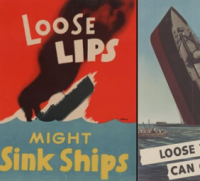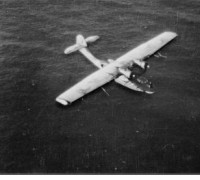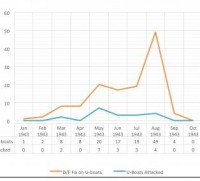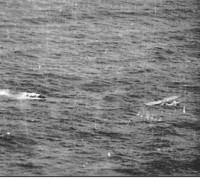THE AXIS AND ALLIED MARITIME OPERATIONS AROUND SOUTHERN AFRICA 1939 1945 - WAR ON SOUTHERN AFRICA SEA
30)NAVAL CENSORSHIP SECTION
.3.5 The Naval Censorship Section
After the establishment of the Union Censorship Office in November 1939, an officer on Ransome’s staff was appointed as the full-time Naval Censorship Representative (NCR) in the office of the Chief Censor. Because the office of the Chief Censor, Brig H.J. Lenton – the Union Postmaster General – was located in Cape Town, it allowed for closer cooperation with the CNIC. The Cape Intelligence Centre received censorship reports on a daily basis, which were subsequently scrutinised by the NCR.[1] The NCR reported on any naval interest, and then passed on the information by signal or letter to other interested authorities. The CNIC also gave constant guidance to Shipping Agents regarding general censorship requirements by the regular issuing of a Cape Area Naval Intelligence Pamphlet, titled ‘Communication between Shipping Agents’. This system continued until 1943, when it was replaced by two separate pamphlets issued by the MWT representative in Cape Town. They were the ‘Oversea Communications’ and ‘Internal Communications’ Cape Area Naval Intelligence Pamphlets. The MWT Representative scrutinised and considered all censorship reports, and closely cooperated with the CNIC about censorship matters. The MWT Representative dealt with internal matters that involved cases where Shipping and Clearing Agents passed along information involving vessels improperly, while Maj F.M. Bramall RM, the new SO (I) Cape Town since March 1943, dealt with all matters regarding oversea communications.[2]
The NCR assisted the Allied and South African naval authorities in enforcing the naval censorship where breaches of the censorship rules occurred. The major scapegoats in this regard were ships’ personnel and troops calling at South African ports in troop transports which breached censorship rules through the posting of letters while ashore.[3] The NCR hence delayed the posting of these letters by 14 days and sent a stereotyped letter to the Master/Captain of the vessel informing him of the breach of censorship for further action. More serious cases where codes were arranged to communicate future shipping movements were forwarded to the MWT Representative in Cape Town, or to the appropriate authorities at the next port of call, for the required disciplinary action.
Throughout the war, there was good cooperation between the NCR and the Union Censorship Office. The NCR was furthermore responsible for preparing all Port Intelligence Reports during the war. He was also accountable for other special operational intelligence reports, such as the interception of Vichy shipping and the Madagascar campaign, and circulating these reports within the Cape Intelligence Area.[4]
Conclusion
The Axis influence on the maritime intelligence war in southern Africa proved negligible from the start. The initial contacts established between Germany and the OB were found to be haphazard, especially since the Germans desired to establish contact with Malan rather than with Van Rensburg. In addition, these contacts had no immediate bearing on the maritime war in South African waters.
The arrival of Rooseboom and Sittig in South Africa had a marked influence, as both agents at various stages passed along shipping intelligence to Berlin via the Trompke Network in Lourenço Marques. Once Sittig established direct contact with Berlin, he was able to transmit both political and military intelligence without interference by Werz. The operational value of the military intelligence passed along by Sittig to Berlin was, however, extremely questionable, especially since the shipping intelligence was substantially outdated by the time it was transmitted to Germany. Besides, two-way transmissions between Sittig and Berlin were only established in July 1943, which was shortly before the SKL and BdU ceased to consider South African waters as a viable operational area. The shipping intelligence passed on to Berlin by the FELIX Organisation after July 1943 thus held no direct operational value to Dönitz and his U-boat Commanders for the rest of the war.
The CNIC, under the control of the SO (I) Cape Town, was the main role player in the Allied maritime intelligence war fought in southern Africa between 1939 and 1945. The CNIC formed a vital link in the overall Allied maritime intelligence organisation during the war by presiding over both operational intelligence and counterintelligence in the Cape Intelligence Area. The various sub-departments of the SO (I) Cape Town, namely Tracking, Operational Intelligence, Security, and Naval Press Relations and Censorship, worked in unison during the pursuit of the naval war. The “Y” Organisation in South Africa in particular, proved indispensable in detecting the locations of all Axis naval vessels in South Africa during the war, while also listening in on the illicit wireless transmissions in the Union and Mozambique. ![]()
Measuring the true operational value of the CNIC during the war forms the focus of the final chapter of this dissertation. Ascertaining its worth, however, is only possible by investigating the nature, extent and successes of the ASW operations in South African waters during this period. These aspects are thus discussed in chapter 5.
[1] Monama, ‘South African Propaganda Agencies’, p. 151.
[2] TNA, ADM 1/31006. History and Organisation of the Naval Intelligence Centre Cape Town. Naval Censorship.
[3] Monama, Wartime Propaganda in the Union of South Africa, pp. 69-70.
[4] TNA, ADM 1/31006. History and Organisation of the Naval Intelligence Centre Cape Town. Naval Censorship.



